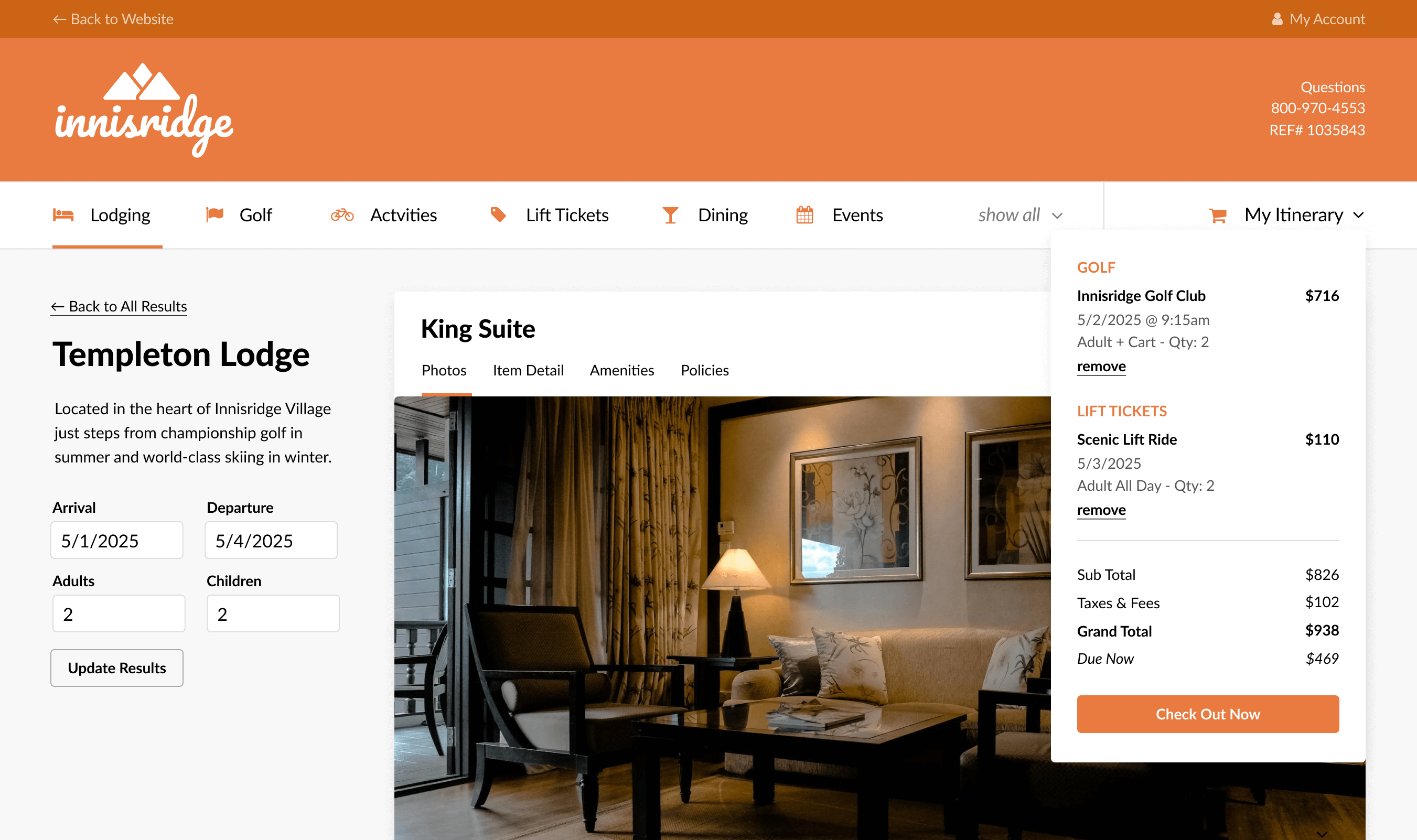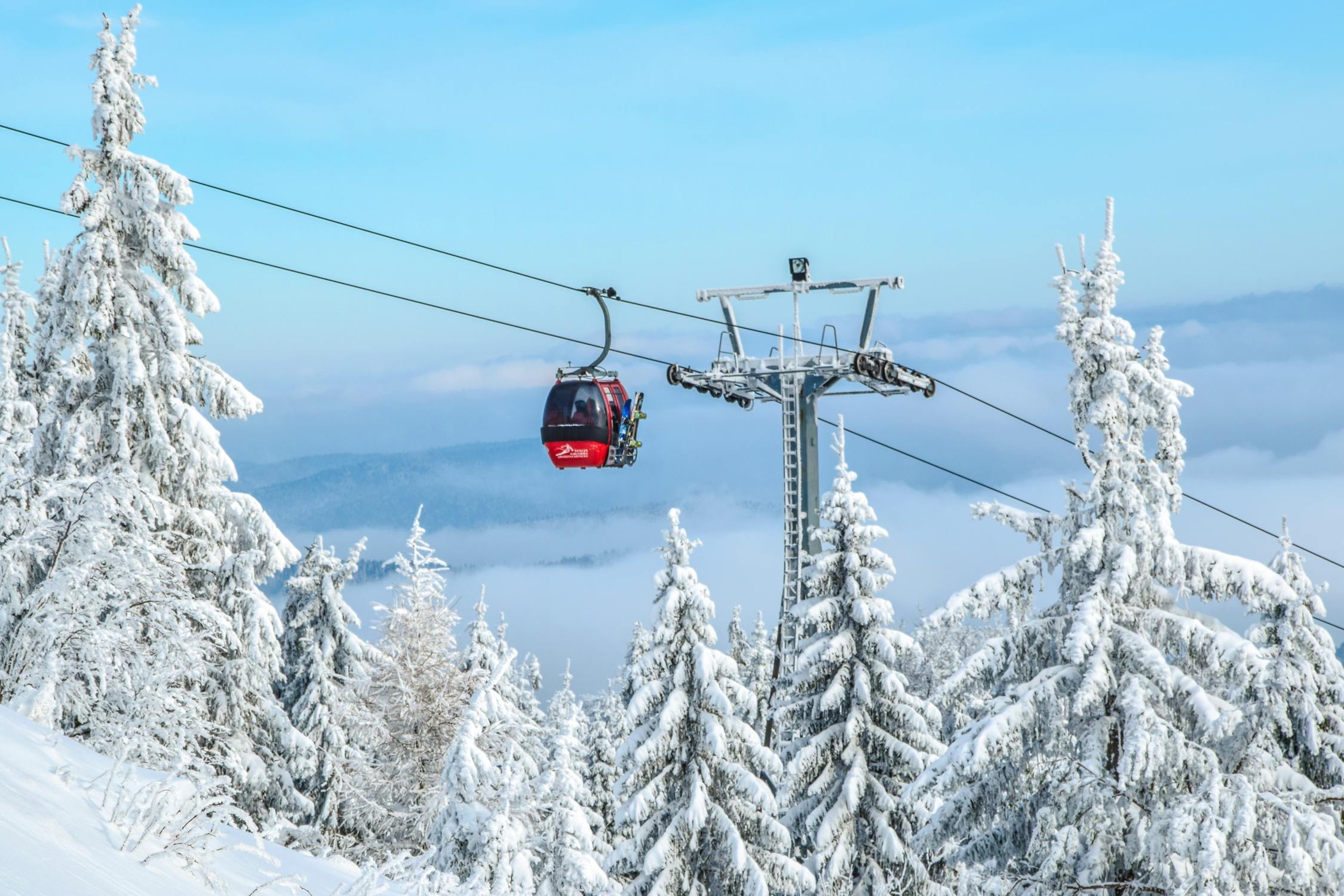
Trends

After western mountain destinations struggled with a tepid and tentative start to the summer season, a little tweaking with daily rates was enough to turn things around. With just one month to go—and October is a relatively low impact one—the summer of 2024 is going to wrap up as a winner in all three categories—occupancy, daily rates, and revenue. But according to DestiMetrics,* the Business Intelligence division of Inntopia, the upbeat booking momentum recorded in August for the coming winter cooled considerably in September. In their monthly Market Briefing distributed yesterday to their participating properties in 17 mountain destinations, price-sensitivity was the dominant message as cautious consumers evaluated economic news and stepped back significantly on winter bookings.
September occupancy slipped as rates edged up
In a year-over-year comparison to last September, occupancy was down 2.7 percent while the Average Daily Rate (ADR) managed a 1.5 percent increase. Those slight differences resulted in a 1.2 percent decrease in aggregated revenues for the month.
Sunny finish for the summer
Despite some occupancy anxiety early in the summer, as the season unfolded, properties adapted and destination visitors rallied; with just one month to go, the full season is currently posting a 2.7 percent increase in occupancy as of Sept. 30 with gains being reported in every month except September. And after rates pulled back early in the summer, ADR managed to rise 2.9 percent over last summer and those slightly higher rates and occupancy are now delivering a healthy 5.6 percent increase in aggregated revenues over last summer.
Winter booking pace takes a decided downward turn
The booking pace in September, which measures bookings taken during the month versus last year, retreated considerably and as of Sept. 30 was down 15.9 percent with arrivals declining in all six months from September through March. The decreases ranged from a 7.4 percent drop in bookings for October arrivals to a concerning 15.8 percent drop in bookings for December—primarily for the week before Christmas—and a striking 31.2 percent plunge for February.
Despite the startling decline in bookings compared to last September, on-the-books occupancy for November through March is currently only down a scant 0.9 percent as of Sept. 30. Both February and March are currently posting moderate increases while appreciable declines are occurring in November, December, and January. Currently, winter rates are up a slight 1.4 percent with moderate increases emerging in December and January while November and March are posting moderate decreases.
“We saw a significant reversal in booking pace during September as consumers hit the pause button on winter bookings that closely paralleled the sharp decline in consumer confidence,” observed Tom Foley, senior vice president for Business Intelligence at Inntopia. “And even though there are some upticks in occupancy compared to last year at this time, the reality is that the booking pace stalled significantly last month. For now, the broader positive economic news hasn’t translated into a more positive consumer mood, so we’re eagerly waiting for the first snowfall that will overcome that hesitation and trigger fresh bookings.”
Economic indicators
*The Dow Jones Industrial Average (DJIA) rose sharply during the month to tack on an additional 767.1 points or 1.85 percent during September to close the month with the highest monthly close in the history of the DJIA—and marking the tenth month-over-month increase in the past 11 months. The Dow is a dramatic 26.3 percent higher than one year ago and a whopping 66.5 percent higher than February 2020 just prior to the onset of the pandemic.
*Consumer reaction during the month was measured by two indices—the Consumer Confidence Index (CCI) and the Consumer Sentiment Index (CSI)—and the two went in opposite directions during September. The CCI declined a sharp 6.5 percent as consumer’s optimism retreated despite lowering interest rates and easing inflation–marking the largest drop in confidence since August 2021.
“Even though interest rates and inflation edged down, persistent high interest rates and prices were cited as the main reason for the downturn in confidence,” offered Foley.
In contrast, the CSI from the University of Michigan, ticked up in September and gained 3.2 percent to take it up above the 70-point threshold for the first time since last April. The rise is being credited to higher expectations for the labor market and improving inflation.
*The Unemployment Rate and job creation figures came as an unexpected surprise to financial markets and analysts with the creation of 254,000 new jobs while the unemployment dipped down from 4.2 to 4.1 percent during September. Further bolstering markets was the upward adjustment of job numbers for both July and August for a total of 72,000 additional positions. The Leisure and Hospitality sector added 78,000 positions during September with 6,600 created in the Accommodations sub-sector.
*Once again, the National Inflation Rate declined for the sixth consecutive month to reach 2.5 percent in September and its lowest level since February 2021—dramatically below its peak of 9.1 percent in June 2022. “While fuel oil and gasoline prices both dropped during the month, after two years of relentless high inflation, consumers are still wary of recovery and remain price-sensitive,” continued Foley.
Keeping an eye on
*Daily rates for the summer season moved up 2.9 percent compared to last year but those late summer rate increases suppressed bookings and led to a seven percent decrease in occupancy for both September and October.
*The negative booking pace in September had a significant impact on winter as there were 191,636 room nights booked for arrivals in November through March for approximately $134.4 million in revenues. This is 10,986 room nights and $2.9 million less than last September.
*Christmas and New Year’s holiday are challenging this year due to a shift in the day of week for the holidays and how that impacts school breaks. There is currently a strong dip in bookings for arrivals the week of Dec. 14-20 and Christmas week itself is down considerably from last year at this time. Post-Christmas week through New Year’s Day is mostly up, while Jan. 1-10 is down moderately.
*Winter rates edged up during September with the aggregated ADR for arrivals in November through March up 1.4 percent in year-over-year comparison to Sept. 30 last year—and up 0.9 percent from where they were last month. December is the only winter month posting higher rates compared to last year—a tiny 0.4 percent. All other months are seeing miniscule rate reductions.
*Unpaid stays have become a bigger piece of winter occupancy whether usage is by owners, guests of owner, complimentary offers, or familiarization trips. These owner-blocked times for various personal uses has grown significantly since prior to the pandemic. In September 2019, 26 percent of total occupancy on-the-books was unpaid. As of Sept. 30, this year, that non-revenue usage has reached 30.3 percent
“The inverse relationship between higher rates and lower occupancy and vice-versa, continues to dominate booking patterns and we expect that to continue until snowfall triggers the incentive for consumers to start booking,” noted Foley. “Daily rates are essentially flat compared to last year as properties wrestle with the challenge of attracting visitors while maintaining budgets and the bottom line.”
Price sensitivity also became apparent across the three property categories. Economy properties priced up to $400/night are holding rates flat and is attracting the largest occupancy gain among the categories—up 1.4 percent. Moderate properties ranging from $401 to $850/night lowered rates 0.7 percent which gave them a tiny 0.3 percent increase in occupancy. Luxury properties priced from $850/night and up have raised their rates 3.1 percent but that has pushed their occupancy down two percent.
“What began as a slow summer season, ramped up in late May and early June allowing for a very good summer for participating properties with increased occupancy and revenues compared to last summer. That achievement was accomplished with moderate and sustainable gains rather than the wild rate swings recorded in the past few years,” Foley summarized. “But we definitely saw a marked cooling off in winter bookings during September driven partially by persistent price-sensitivity and ongoing concerns about inflation. As is often the case, the arrival of snowfall will write the next chapter for mountain lodging properties,” he concluded.